Insulating old house in a cold climate
|
I have purchased an old farmhouse in Maine, with virtually no insulation in the walls or ceiling. In Maine, R40 insulation is recommended in the walls and R60 in the ceiling, but realistically we will not be able to achieve that. Still, we want to do the best that we can. I’m trying to decide what to do with the walls, and there are a couple of options: 1) I’ve seen info on the web about some foam insulation products that can be sprayed into existing wall cavities, achieving approximately R7 per inch. I’m not sure if I can find an installer in Maine, but they are intriguing because I would not have to remove the existing sheetrock and plaster/lath to build the walls out, and I’d be able to get about R28 within the studs, and block air infiltration at the same time. I’d love to hear from anyone who has knowledge of these or has used these products. 2) Or, we could tear off the plaster/lath and sheetrock on the existing walls (the house has both, in various places), build out the studs, then insulate with cellulose, fiberglass, or cotton batts. Then, possibly install Reflectix or some other radiant barrier before installing new sheetrock. We are trying to remodel in the most sustainable and non-toxic way possible (but still within our budget). We are very concerned about offgassing and don’t want to install anything toxic or that could be particularly toxic if there were a fire. We would rather not tear off the existing interior walls if we can help it, because they then end up in a landfill and we also would need to buy new materials, but are willing to do this if it makes the most sense. I’d love to hear thoughts on insulating an existing house, in an environmentally responsible way. Joan |
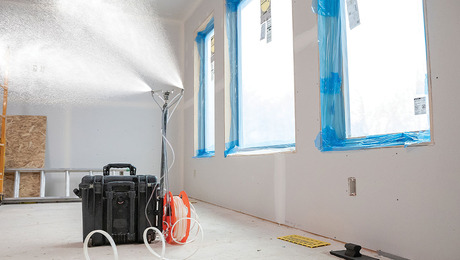

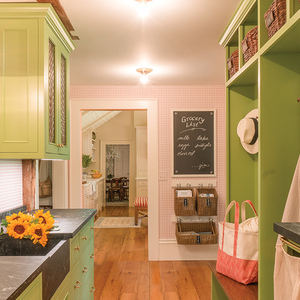
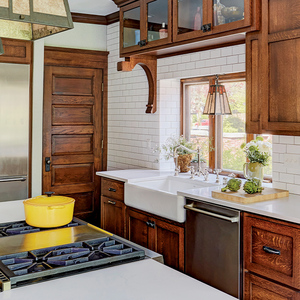
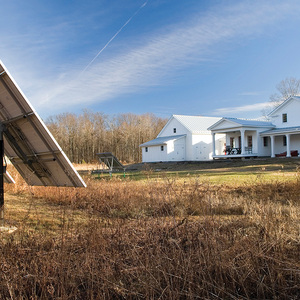








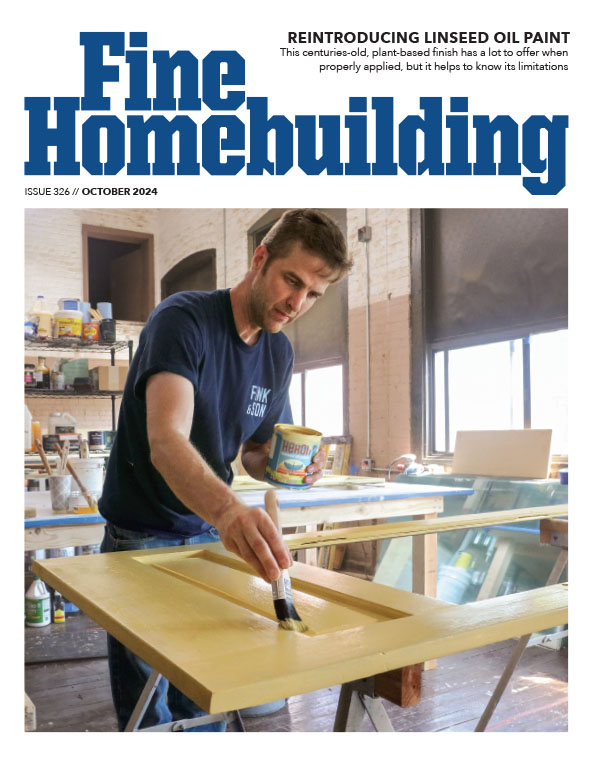





Replies
IMO the practicle method would be to tear out the interior walls...
build out the studding... and you can still spray foam..
this would also give you the chance to remedy unseen defects, install additional wiring to better meet your needs.... verify the plumbing.. all which could come back as an expensive repair later...
also if there is blocking or obstructions in the walls they would inhibit a complete injected foam insulating...
burn the lath as heat and the plaster is considered clean fill...
Life is not a journey to the grave with the intention of arriving safely in a pretty and well preserved body, but rather to skid in broadside, thoroughly used up, totally worn out, and loudly proclaiming
WOW!!! What a Ride!
Forget the primal scream, just ROAR!!!
I think you've been confused by some other folks' "chicken little" fears!
An old house has a few aspects that severely limit your choices. The biggest problem, over the longer term, is that the house leaks; this means moisture will be able to enter the outside walls, as will bugs, mice, etc.
As much as I like fiberglass, it doesn't work well when wet. Or damp. And makes a mouse nest second to none. Add to that the thin walls, and fiberglass is a poor choice.
The same problems arise with the various blow-in products.
So- looks like you get to open the walls up. Now, if you are absolutely set against any sort of foam, you can get fiberglass / mineral wool blown on with a glue; while the glue is intended to make it stick to things, it also helps reduce moisture and settling problems. It's still not a very effective insulation, as compared to foam.
I once saw a refractory material, that looked and felt like Styrofoam granules (but was actually an absolutely fireproof ceramic), that would be perfect. Great R-value, can be blown in, no settling, etc... but I have no idea if it is available.
Personally, -and I will be doing this as I remodel my place- I would go with the foil-faced foam panels, with edges sealed with that low-expanding foam. The foil faced stuff cuts a lot easier than Styrofoam, and is a lot easier to work with.
Others with great memories will recall that I have spoken harshly about the fire risks of foam insulation. I still do. They burn like rocket fuel, and give off some really nasty fumes. Nevertheless, when sealed behind a layer of drywall, they are a perfectly safe product. Moisture proof, bug proof, and exceptional insulators.
If you want to all but eliminate any risk of fire inside the walls, replace the wiring with a metal-sheathed method while the walls are open.
Howzabout if she re-sided, with new Tyvek and new clapboard/shingles? That would help the moisture infiltration problem, and if its really an OLD farmhouse, itcould use re-siding. Some of the plank wall sheathing probably needs replacement as well.
R40/60?? Wow. What is this going to cost, with tearing out walls, etc. ? Are you sure it's worth it? When do you want to move in? People have lived in Maine for centuries with much more modestly insulated houses. Sure, if money and time are no object, it would be nice to have a super-insulated house, but you need to think about how you want to spend these scarce commodities. Don't get stampeded.
The most economical insulation method for old home is dense pack cellulose insulation. You can blow it into the stud bays for either the interior or exterior. I have a large 2.5 Story Victorian home, about 3,000 sq. feet. I got quoted $3,500 to insulate the entire house using dense pack cellulose.
There are differing opinions on how well the cellulose handles moisture inside the walls. Some say it can better diffuse moisture without harming the walls. Others say it holds onto moisture too long and can cause problems.
I know there is a company that makes a slow rise foam that can be poured into existing walls. I live in the Chicago Metro area and was unable to find an installer for the slow rise foam.
Forget about R40 in the walls. Since you have an old house you are not required to meet current code. The important this is to create a air seal. Both dense pack and foam are effective air sealers if installed properly.
I'm no expert, but I would vote for dense-pack cellulose. It's environmentally friendly, and way more effective than fiberglass. Foam is expensive. I'm pretty sure the dense pack can be installed in your existing walls.
Removing the plaster and lathe and putting in drywall would be a huge job. I would see about updating and adding wiring BEFORE you pack the walls with cellulose (or whatever insulation you choose). If you want more outlets, uptdated wire, etc. it will be much easier to do it first.
Jo
Thanks everyone for your comments. I'm leaning towards dense pack cellulose, but am concerned that there is most likely no vapor barrier beneath the clapboards. Maybe some tarpaper, but we're not sure what is there... I guess we should pull off a few boards to find out.
What do you think of cellulose if there is not a good vapor barrier? We are not going to pull off all the clapboards to install one! Foam becomes maybe a good option then?
Thanks,
Joan
I can tell you what's behind there, because I have pulled myriad clapboards off my 1905 house: tar paper so ancient and fragile it crumbles in the wind. (At least it's not trapping any interior moisture!)
R-40/60? What part of Maine are you in? Here in so. Maine (around Protland) we use R-19 in walls and R-38 (fiberglass) in ceilings. You can get a little higher in r- value if you use high density fiberglass, but th get that high, you will probably need some type of foam product. Personally, i think trying to get that high of an r-value in an old house is going to be a waste of time and money since old houses, mine included, tend to be built not-so-tight!
Edited 9/28/2006 4:17 pm ET by netanyahu
I will almost never tell someone to reduce insulation, but I have never, ever run into a home in maine with R40/60.
Be aware if you really tighten the envelope with blown or foam products, you'll probably need an air system. I would recommend sealing it that tight, but the cost will be higher. Of course your air quality will be better and your home much more efficient as well, but it may be tough to retrofit an air system at this point.
I would make a plan for the building and then settle the order you're going to tackle things in. If you cannot get an air system in the house, there is a limit to how tight you really want it. Too tight, and you'll see all kinds of problems and if offgassing bothers you, remember you expel stuff you don't want to keep rebreathing every time you exhale.. or do just about anything else in the home.. If it can't leave, that's moisture and pollutants you are building up inside your home.
Also, I see little benefit to a radiant barrier in your wall. remember they need an airspace to be effective.
-=Northeast Radiant Technology=-
Radiant Design, Consultation, Parts Supply
http://www.NRTradiant.com
How old is the house? Is it frame or post and beam? It makes a big difference in your options. If it's plank wall construction as in post and beam, there is no space to blow in or fill with insulation. Then you either frame a new wall inside or outside [I just saw this done for the first time] and fill it with insulation, or use rigid foam on the inside and rock over it. If it's frame const. the options have already been covered here. Good luck.
How old is this house? How are the walls framed? What part of Maine? Most of these posts are utterly useless without this information.
The house is 2x4 construction. It was built over time with a number of additions, but we believe the original part was built in the 1840s-50s. We are doing a complete remodel (it is not really livable as it is), so are willing to tear it down to the studs and build them out if necessary to get more insulation in. We will be replacing all of the windows too, and adding attic insulation.
We will be adding a small addition too, and will make this part and the small part that is now south facing passive solar with some concrete mass in the floor and radiant heating. We really want to reduce our energy dependence, and if it costs more to do that, so be it, but we don't have an endless budget. We will have some nice southfacing roof that we might put a solar hot water heater on, but mostly we will need to wait until solar comes down a bit in price before we do much with that.
If it was built in the 1840s, it may well be much like the one I grew up in, in New Brunswick. Essentially post and beam, with "studs" spaced approximately every 3 feet.....you may find some surprises: ours had the wall cavities filled with barley husks for insulation.
JoanAs always with these questions the answer is between economics of specific situation and your end goal. You have obviously been doing some research and are additionally concerned for the environment. The reason I say this is because if YOU yourselfs are doing this work and have time it always makes a big difference in how to approach it. (If you need to live in it this winter that would also obviously make a difference) If you are having the house renovated by contractors, the smartest thing to do would be to remove the plaster and trim from inside. In the LONG term this costs less and gives you the most options. But it usually turns into a big job and hard to know where to stop without it leading to new windows etc. Your extension jambs on all existing windows and doors become a major job. . and it always uncovers stuff that you now have to fix because you know about it. The additional labor of removing all the plaster and adding a good insulation layer (like foam or spray in cellulose) will lead to huge energy savings down the road and so better for the environment as well. Little damage done when plaster is clean fill and lathe is compostable :P good luckarthurhttp://www.thesmallbuildingcompany.com